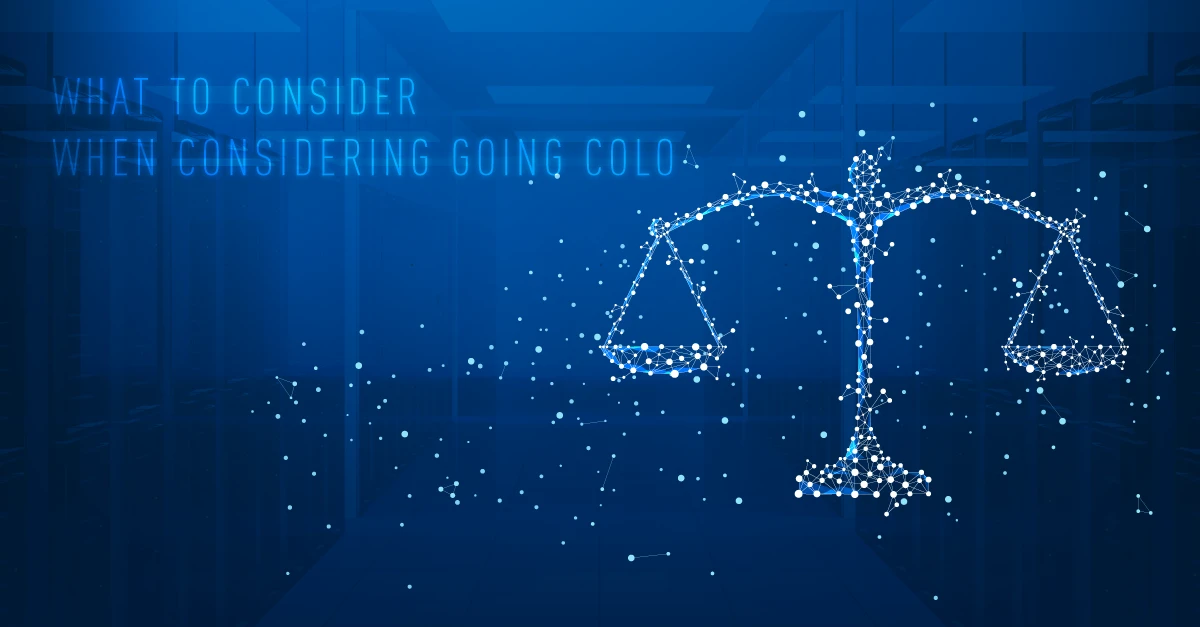What to Consider When Considering Going Colo
Annie Paquette
May 29, 2019
- Categories:
- Industry Trends and Solutions
- Tags:
- intelligent PDU

In our last blog, we introduced the latest whitepaper, Flying Solo or Going Colo? by Marc Cram. We discussed the decision points for flying solo and the things to keep in mind when planning your own data center. Cram points out that companies that build their own enterprise data center have the time commitment, financial capability and above all, business demand, to justify the investment.
But what about those companies that have time constraints and capital committed to growing their business? Cram has a solution for their needs as well. Often their business model, however IT-centric it may be, demands consolidation of assets or faster deployment so they can concentrate on running the business. They don’t have the expertise or infrastructure for their own data centers, let alone security, data center environmental monitoring, or redundancy capabilities.
Choosing to go colo makes a lot of sense for businesses with a growth and operations mindset on many different levels. Colocation providers not only have the expertise to run and replicate their locations, they offer many services in addition to selling floorspace. Besides space, power and cooling, they provide monitoring, support and cleaning. All at a cost, course. Cram indicates that the challenge in going colo is managing the cost and risk, and the factors to keep in mind are equipment and data center environmental monitoring.
When you’ve decided to go colo, how do you get your equipment from your facility to the colocation center? It could get lost, stolen, damaged or delayed in transit. What if it doesn’t fit or is too heavy? What about data center PDUs? It could be a chance for a new start with more efficient equipment tailored to your needs. Or it could be a hassle, when the current equipment works well together. Choosing a supplier like Server Tech could help make sure the transition with new, old, or new and old equipment goes smoothly. Cram lays out what many managers have to contend with, suggesting some questions to ask.
- Will the colocation provider be able to handle the rack density with a single power drop now? What about in the future?
- Does the IT load directly impact revenue? Is it time-sensitive?
- Does the current hardware support intelligent platform management interface (IPMI)?
Now to the monitoring question. Cram has found that most savvy colo customers end up in the “trust but verify” camp. They may pay for data center environmental monitoring services but choose to take the final responsibility on themselves. In a room full of equipment, a disaster may mean that the remote hands technician tends to the biggest customer first. This is where access controls and asset monitoring can go a long way toward dealing with alarms and measuring power usage. What do you consider for your colo monitoring needs?
- How do you secure the equipment, both physical and logically?
- Is data center infrastructure management (DCIM) included? Should I provide my own?
- Does the facility provide intelligent PDUs?
- Will the racks need frequent access? Who will do it? Should I have an asset management system in place at the rack level?
- Will I need the remote hands service to reboot hardware or will it be third party?
You can find these questions, and even more, to help you approach your colo project with confidence by reading Marc Cram’s Flying Solo or Going Colo? Next up, whether you go colo or fly solo, intelligent racks with intelligent PDUs are the way to go. Watch this space to find out more.
Thanks for your submission. One of our Power Strategy Experts will get back to you shortly.